Koutoubia Mosque in Marrakech: A Guide to Its History, Architecture & Significance
The Koutoubia Mosque towers are 77 meters above Marrakech, and its magnificent silhouette is visible 25 kilometers away. This architectural masterpiece took 40 years to complete until 1158 and became Marrakech's largest mosque. Today, it welcomes up to 25,000 worshippers beneath its soaring walls.
Rich history echoes through the Koutoubia Mosque's grand structure. The mosque's name comes from the Arabic word for bookseller, a tribute to more than 100 book merchants who once gathered near its walls. Its minaret showcases a remarkable design feature - a ramp winds its way to the top instead of stairs. This unique architectural choice allowed the muezzin to ride horseback upward when calling the faithful to prayer.
The Name behind Koutoubia Mosque
The name "Koutoubia" comes from the Arabic word "kutubiyyin," which means booksellers. This name reflects its deep historical connection to literature and learning. The mosque's surroundings buzzed with activity as nearly 100 book vendors traded handwritten manuscripts and religious scrolls. These merchants became experts at creating and selling detailed religious texts. Their presence made the area a prominent hub for literary trade.
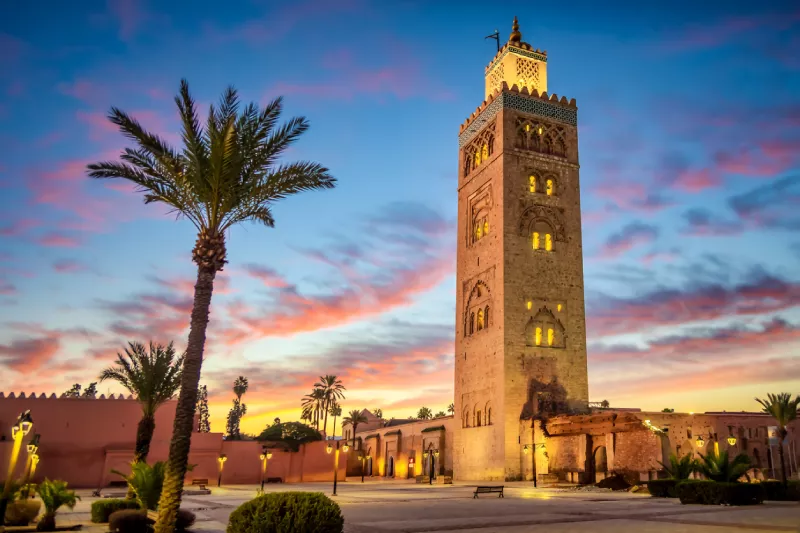
History of Koutoubia Mosque
Koutoubia Mosque's remarkable trip began with the conquest of Marrakech in 1147. After seizing control from the Almoravids, Almohad caliph Abd al-Mu'min ordered the demolition of all existing religious monuments in the city. He envisioned a new mosque and started its construction on the former Almoravid palace's site.
The mosque's original construction phase lasted from 1147 to 1157, and people actively used it for prayers. A most important finding revealed that the structure did not line up with Mecca by approximately 5 degrees. Abd al-Mu'min commissioned a second mosque around 1158 instead of modifying the existing building.
Key construction milestones of Koutoubia Mosque:
- First mosque construction: 1147-1157
- Second mosque initiation: 1154
- Completion under Yaqub al-Mansur: 1190
The second mosque built next to the first, managed to keep similar architectural features but with the correct orientation. Abd al-Mu'min also moved the Almoravid minbar from the Ben Youssef Mosque to the new structure to symbolize political and religious authority.
This architectural marvel influenced Islamic buildings beyond Marrakech. The Hassan Tower in Rabat and the Giralda in Seville used it as their model. Both mosques served the community together until the 17th century, though the first mosque deteriorated over time.
Architecture and Design
The Koutoubia Mosque shows classic Almohad architecture with its understated elegance and balanced proportions. This mosque's design blends simplicity with grandeur. We built it using brick with sandstone elements.
a) The Prayer of Kotoubia Mosque
The prayer hall covers an impressive area. It measures 90 meters wide and ranges from 57 to 66 meters in length. This space can hold 25,000 worshippers and has these distinctive architectural features:
1) 112 columns supporting horseshoe arches
2) 17 parallel naves creating rhythmic spaces
3) A traditional rectangular plan with a large central courtyard
4) Sandstone exterior walls on three sides
Builders chose materials carefully to ensure durability and beauty. The mosque's main structure uses brick for columns, arcades, and mihrab niches, while sandstone makes up the exterior walls. Lime mortar binds everything together to ensure structural strength.
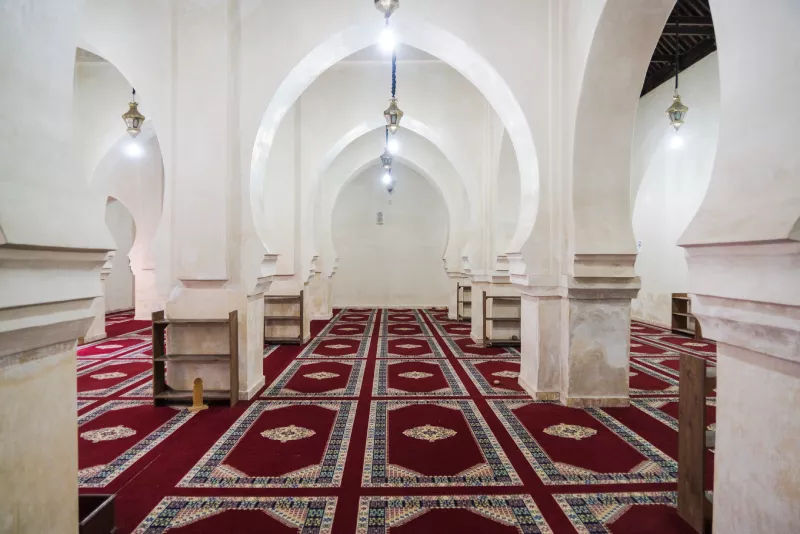
b) The Minaret of Kotoubia Mosque
The minaret stands as an engineering masterpiece at 77 metres tall with a square base of 12.81 metres per side. Its design has a main shaft that takes up four-fifths of the height and ends in an open-air platform. This architectural style went on to inspire two other prominent structures - the Hassan Tower in Rabat and the Giralda in Seville. The minaret's height-to-width ratio of 5-to-1 created a fundamental change in North African minaret design that established more slender proportions.
The tower's decorative elements display intricate craftsmanship with rows of green tiles and beautiful mosaics near the top. Inside, six chambers connect through ramps instead of stairs, which lets the muezzin ride up on horseback.
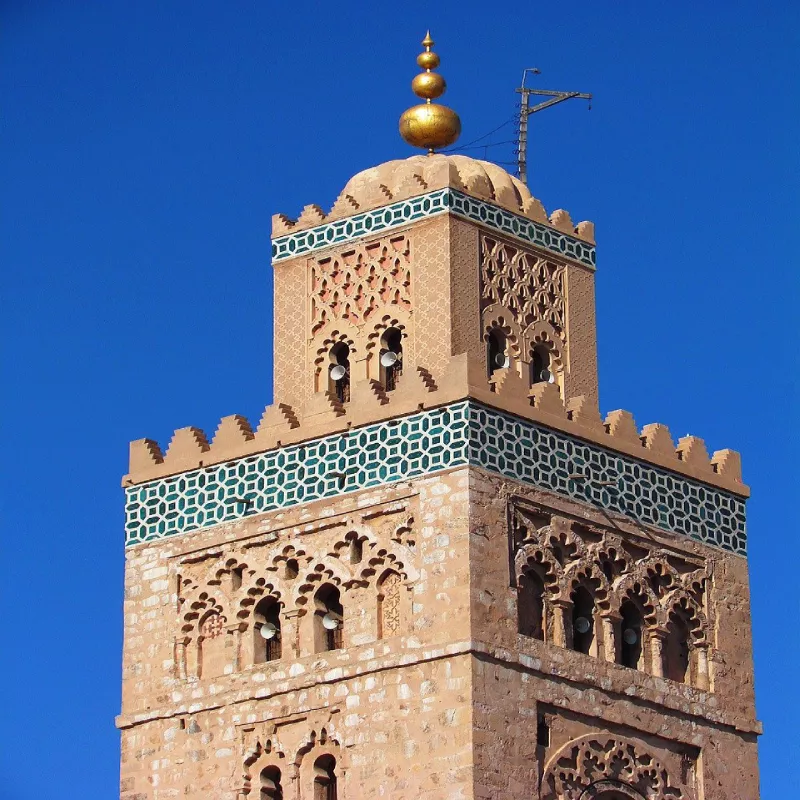
Religious and Cultural Significance of The Koutoubia Mosque
The Koutoubia Mosque fills Marrakech with the call to prayer five times each day. This spiritual sanctuary stands as the city's main place of worship. Thousands of faithful worshippers gather at this largest mosque in Marrakech.
The mosque became a center of Islamic learning in the 12th century when much of Christian Europe was intellectually quiet. The presence of great scholars like Averroes shows its importance as a knowledge hub. His commentaries on Aristotle's works later shaped European Renaissance thinking.
Islamic design owes much to the mosque's architectural excellence. The distinctive minaret became the model for two other magnificent structures - the Hassan Tower in Rabat and the Giralda in Seville. This architectural influence shaped more than just appearances. The minaret's height-to-width ratio created new standards for North African mosque design.
Koutoubia's cultural impact reaches well beyond its religious role.
Local laws protect the mosque's dominance in Marrakech's skyline. No building taller than a palm tree can be built near it. These preservation efforts help the mosque continue its role as a spiritual beacon and evidence of Morocco's rich architectural heritage.
Influence and Legacy
Koutoubia Mosque's architectural brilliance continues to shape Islamic design in North Africa and surrounding regions. The minaret introduced a groundbreaking height-to-width ratio of 5-to-1. This innovation created new standards for mosque construction and represented a major change from traditional North African designs.
This mosque's design influence reaches way beyond Morocco's borders. Several famous structures drew inspiration from its architecture:
a) The Giralda in Seville, Spain - formerly a minaret, now a bell tower
b) The Hassan Tower in Rabat - an unfinished mosque project
c) The Hassan II Mosque in Casablanca - a modern interpretation
d) The Twin Towers of Moscow's State Historical Museum
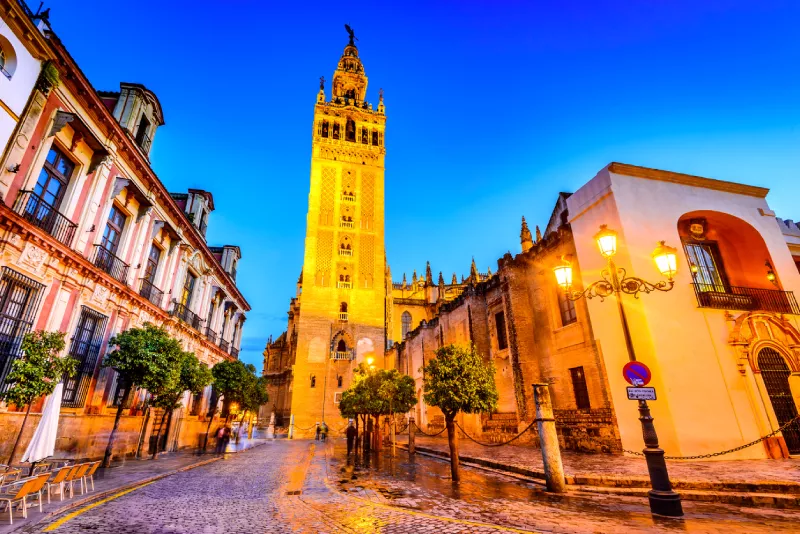
Kotoubia Mosque as a UNESCO World Heritage Site
The mosque's artistic excellence became a measure that builders copied throughout Morocco and parts of Algeria. Its unique features like scalloped arches, pointed merlons, and decorative ceramic tiles became defining elements in religious buildings across the region. These design patterns appeared in Spanish Toledo as well.
UNESCO recognized the mosque's importance by including it in the Medina of Marrakech World Heritage Site in 1985. The mosque's role as a cornerstone of Muslim architecture helped the medina earn its outstanding universal value designation. Local authorities protect the mosque's dominance through strict rules. No building in its vicinity can rise above palm tree height.
The Koutoubia Mosque stands as evidence of Almohad architecture's precision. Its simple yet perfect proportions inspire religious architecture across the Maghreb even today.
Tourist Visiting Tips
You'll need to know a few important things before visiting the Koutoubia Mosque. Following these guidelines will give a meaningful and respectful experience at this historic landmark.
a) Visiting Hours:
The mosque opens its doors to visitors 9:00 AM to 6:00 PM daily. You can view the exterior during these hours, but prayer times might limit access to some areas. The best time to visit is between prayer sessions. The mosque gets busier on Friday mornings because of weekly congregational prayers.
b) Tickets:
You can visit the Koutoubia Mosque free of charge. The mosque welcomes voluntary donations to help with maintenance. Guided tours are a great way to get more from your visit. These tours cost 39€ and include stops at other historic sites like the Bahia Palace and Saadian Tombs.
c) What to Wear:
The mosque's sacred nature requires respectful dress. Here's what you need to wear:
-Men should avoid wearing shorts
-Women must cover their heads and wear long skirts or trousers
-All visitors should wear modest, loose-fitting clothing that covers shoulders and arms
You can take photos around the mosque but remember to be respectful and not disturb anyone praying. The mosque's neighborhood has rest areas and washrooms to make your visit more comfortable.
Visit Koutoubia Mosque and see more of Marrakech with our Morocco Tours
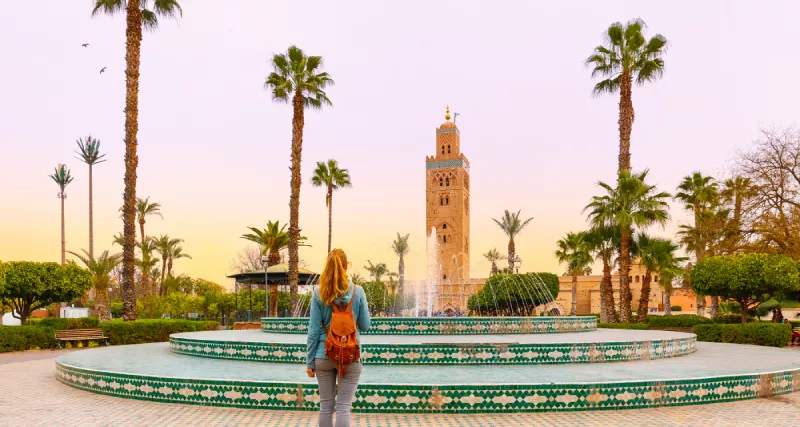
People Also Ask
1. Are Non-Muslims allowed in the Koutoubia Mosque?
Non-Muslims can't enter the Koutoubia Mosque today. This rule dates back to the French protectorate era and helps maintain a respectful atmosphere. Islamic law actually allows non-Muslim visitors to enter mosques outside prayer times. Morocco's policy applies to all mosques except the Hassan II Mosque in Casablanca.
2. How old is Koutoubia Mosque?
The mosque's story unfolds in two chapters. Builders completed the original structure between 1147 and 1157. They rebuilt it completely around 1158. Ya'qub al-Mansur added the finishing touches to the minaret around 1195. This magnificent structure now stands over 800 years old.
3. Why was Koutoubia Mosque built?
The Almohads built this mosque after they took control of Marrakech in 1147. They wanted to show their religious authority by replacing the existing Almoravid monuments. The mosque's location on former palace grounds sent a powerful message - it symbolised both political power and spiritual renewal.
4. Why is Koutoubia Mosque Famous?
Several features make this mosque remarkable. It stands as Marrakech's largest mosque. The mosque's beautiful design inspired other famous buildings like the Giralda in Seville and Hassan Tower in Rabat. Its name comes from the booksellers - up to 100 of them once sold their books at the mosque's base.
-
Travel Experience Since 1955
Memphis Tours is one of the pioneers which have great impact on travel industry for more than 55 years of experience.
-
Personalized Travel Services
Whatever your travel dreams, together we can custom-design the perfect itinerary with highly personalized services just for you
-
We Speak Your Language
A multilingual website offers content in 6 different languages English, Spanish, Portuguese, French, Italian and German
-
Flexibility to Change
We know how important it is for travellers to have the flexibility to change their itinerary due to some reasons or force majeure
-
Your Safety and Security
A professional will accompany the guests to all of the places; they will never be left alone to fend for themselves
-
High Quality Service
We do believe honestly that quality should come first and quantity would come later and our main objective focused on (Quality is our Top Priority)
-
Customer Service 24/7
We offer Customer Support 24 hours a day, 7 days a week by phone and email for questions about our tours and services
-
Support Sustainable Tourism
We are attempting to make a low impact on the environment and local culture, while helping to generate future employment for local people
-
Secure Online Payment
Our website is protected by the world′s most secure online payment system VeriSign Secure
-
Secure Website by MacAfee
Memphis Tours website is a McAfee Secure site that helps keep you safe from identity theft, credit card fraud and spyware
